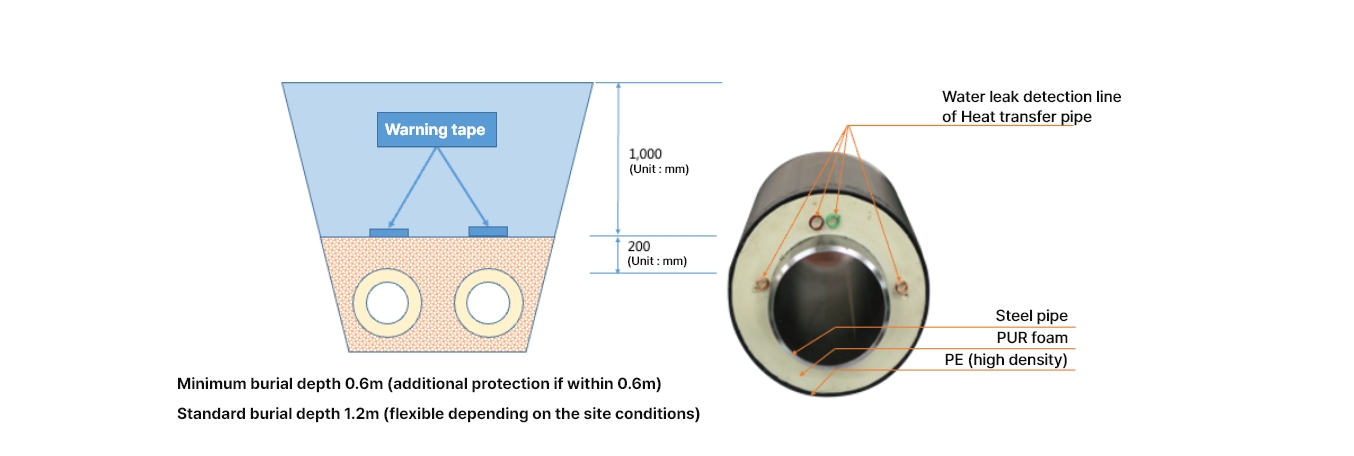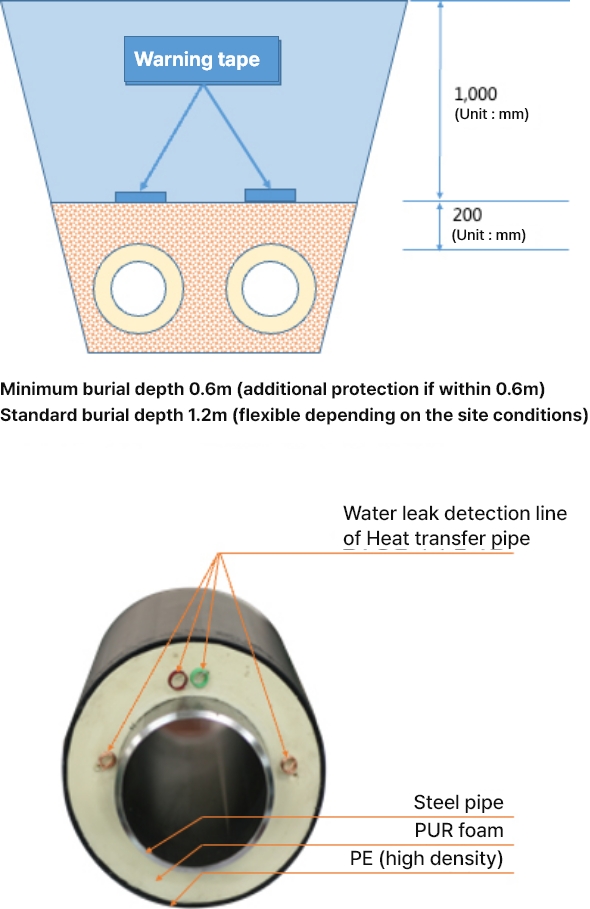District cooling and heating are creating a comfortable residential environment as the next-generation urban infrastructure.
-
District Heating
District heating provides heating and cooling to various buildings such as apartments, shops, and offices, without the need for individual heating facilities in each building. Instead, it relies on centralized large-scale facilities such as combined heat and power plant, heat only boilers, and resource recovery facilities to supply year-round heating and cooling. This energy-efficient and environmentally friendly heating method operates 24 hours a day and offers excellent reductions in air pollutants, ensuring safety and convenience.
HEATING -
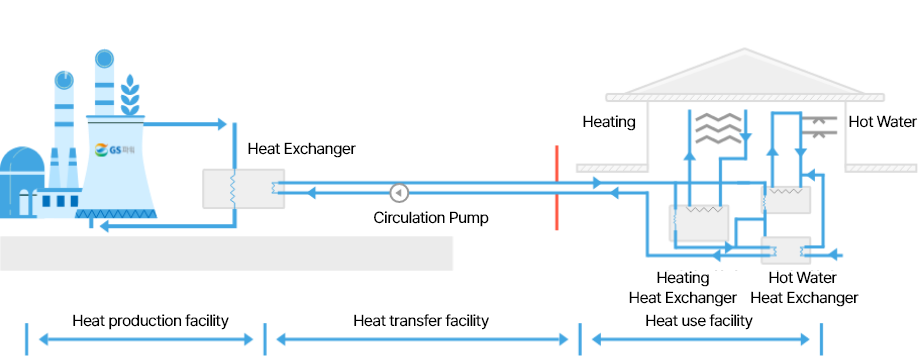
-
District Cooling
District cooling utilizes the medium-temperature heat produced in large-scale heat production facilities to generate chilled water in absorption chillers. This chilled water is then supplied to individual units within buildings to maintain the desired indoor temperature, creating a centralized cooling system.
COOLING -
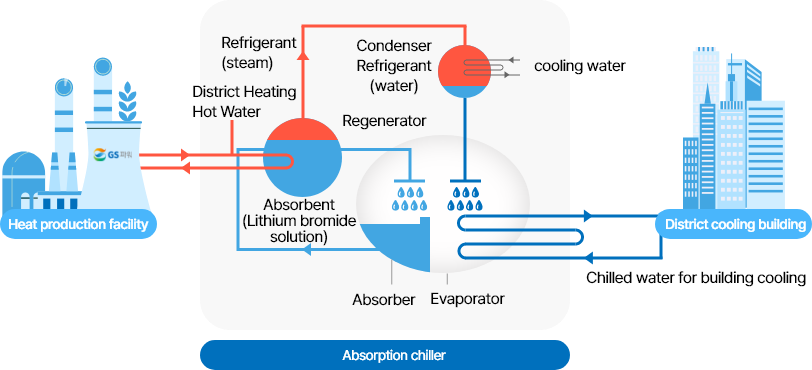
GS Power's district heating is always present in the top-rated residential areas, including new cities like Pyeongchon, Sanbon, Jungdong, Sangdong, as well as Bundang, Ilsan, and Dongtan, providing heating services to ensure the highest level of residential satisfaction.
-
Excellent Cost
EfficiencySavings on Heating Costs
and Facility Maintenance Expenses -
Improvement
in Air QualityFuel Savings,
24-Hour Pollution Monitoring System,
and Reduction of Air Pollutants and CO2 -
Convenient
UsageMaintaining Indoor Temperature,
24-Hour Access to Hot Water -
Improved Energy
EfficiencyApproximately 30% Improvement Compared to Conventional Power Generation Methods by Simultaneously Producing Electricity and Heat
-
Safe Facility
ManagementPrevention of Hazards such as Fire, Explosion, and Leaks
- Combined Heat and Power Generation
537Gcal/hr (Normal)738Gcal/hr (Peak)
- Heat only boiler(PLBwg)
320Gcal/hr
- Fuel Cell
2.3Gcal/hr
- Heat Pump
18.2Gcal/hr
- Waste Heat Recovery
- Gcal/hr
- External Heat Source (Resource Recovery Facilities, etc.)
62.0Gcal/hr
- Heat Storage Tank
20,000m³ * 2
- Heat Transfer Pipeline(2024. 12)
529km(264km * 2rows)
- Heat Supply Households(2024. 12)
205,000(Households)
- Heat Supply Areas
Anyang, Gunpo, Gwacheon, Uiwang
- Combined Heat and Power Generation
357Gcal/hr (Normal)424Gcal/hr (Peak)
- Heat only boiler(PLBwg)
242Gcal/hr
- Fuel Cell
9.1Gcal/hr
- Heat Pump
8.0Gcal/hr
- Waste Heat Recovery
32Gcal/hr
- External Heat Source (Resource Recovery Facilities, etc.)
373.0Gcal/hr
- Heat Storage Tank
25,000m³ * 2
- Heat Transfer Pipeline(2024. 12)
576km(288km * 2rows)
- Heat Supply Households(2024. 12)
225,000(Households)
- Heat Supply Areas
Bucheon, Incheon, Siheung, Seoul (Hangdong)
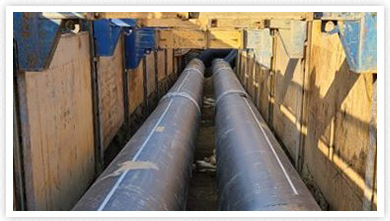
This is a pipe that transports heat from the heat production facility to the heat use facility.
It consists of a supply pipe and a return pipe, has high insulation efficiency, and uses pre-insulated pipes for underground burial.
The heat transfer pipe is operated at a temperature of 75°C to 115°C for the supply pipe, 35°C to 65°C for the return pipe, and an operating pressure of 1.6 MPa (16 bar) or less.
A water leak detection line that detects internal or external water leaks is installed to ensure stable operation.
